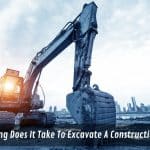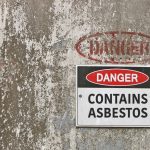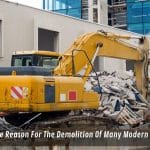Have you ever wondered why old buildings should be demolished instead of preserved? Do you know the reason for the demolition of many buildings? It seems like a terrible waste to destroy something that has been standing for centuries. They tell the stories of the people and events that shaped our world. So why aren’t they saved?
Throughout history, countless buildings have been lost due to demolition. From ancient structures to modern landmarks, each had a unique story to tell. Sometimes, the demolition is necessary for safety reasons, but other times it just seems like a missed opportunity to preserve history.
The demolition of historic buildings sparks a debate between preservationists and those who argue for progress. Some people argue that progress requires the removal of old structures to make way for new ones. While others question the value of destroying something that can never be replaced. In this article, we’ll explore the reasons why buildings are demolished instead of preserved. We will try to understand why the loss of historic buildings is a loss for us all.
What are the reasons why old buildings should be demolished?
There are a lot of people who argue for the demolition of old buildings in order to make way for new ones, but there are also those who feel that preservation is more important. There are many factors that go into deciding whether an old structure should be preserved or demolished.
- One of the main reasons is historical significance. Buildings can tell us about our past and provide insight into how our culture has evolved over time. For this reason, it’s often viewed as a tragedy when a building with historical or cultural value is lost due to demolition.
- Another important factor to consider is the environmental impact of demolition waste. When buildings are torn down, they leave behind tons of debris that must be disposed of properly in order to minimise its negative effects on the environment. The same is true for hazardous materials such as asbestos and lead. They must be removed from old buildings before demolition can take place. In addition, asbestos removal should only be done by professionals in order to ensure that it is done safely and in compliance with local government regulations.
- Finally, there are financial considerations to take into account. Demolition services are expensive and it may not be feasible for property owners to foot the bill for a full-scale demolition and removal of a building. In addition, construction costs associated with new structures often far exceed those associated with preserving existing buildings. This is especially true when it comes to materials. As many building materials used in the past are no longer available or have become prohibitively expensive.
- Abandoned buildings can also pose a safety threat if they are not demolished properly due to faulty foundations, hazardous materials, or other structural issues. In this case, demolition may be the only viable solution when it comes to protecting public safety. In addition, construction industry regulations may require the demolition of a structure if it does not meet certain standards or poses a hazard to the community.
What are the consequences of demolishing old buildings?
- The consequences of demolishing old buildings can be far-reaching and long-lasting. For starters, there is the loss of historical and cultural value associated with each structure that is lost. When a building is demolished we lose an irreplaceable piece of our collective past and can never recover it.
- In addition to the loss of history, demolition also has an environmental impact. The demolition process releases carbon emissions into the atmosphere and produces a large amount of waste that must be disposed of safely. The disposal costs often fall to local governments which may not have the resources or funds needed to manage them properly.
- Finally, there is an economic impact associated with building demolition as well. Construction materials and services can be expensive, especially when it comes to the removal and disposal of large structures. This cost must be taken into account when deciding whether to demolish a building or preserve it.
There are many factors to consider when deciding whether to demolish an old building or preserve it. In some cases, demolition may be the only viable option, while in others preservation may be more appropriate. Ultimately, the decision should be based on what is most beneficial for both the community and our environment.
Conclusion
In summary, preserving existing buildings rather than demolishing them is important for many reasons. It helps to preserve our cultural and historical heritage. Also, it reduces environmental waste and pollution and can be more cost-effective in the long run. While demolition may sometimes seem like the only option, it’s important to weigh all of these factors before making a decision.
Contact Almighty Demolition today for a free consultation to discuss your demolition project and how to make it as environmentally friendly as possible. Our team of experienced professionals can provide you with the best advice, resources, and services. This is to ensure that your demolition project is completed safely and efficiently.







